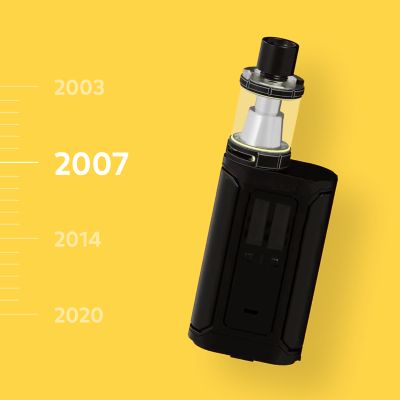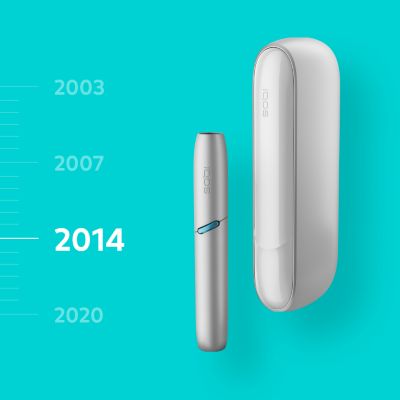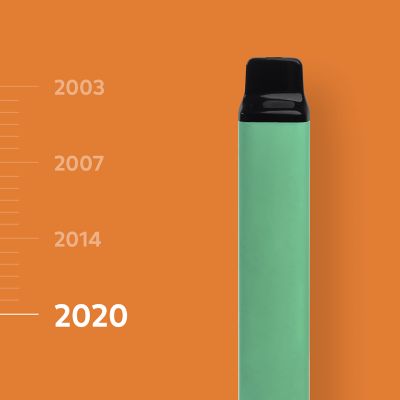The Evolution of Nicotine-Delivery Gadgets for Legal Age Smokers: E-Cigarettes, Tobacco Heating Systems, Pod Systems and Disposables
11/21/2025
It is believed that during his first trip to the New World, Christopher Columbus saw how the residents of Cuba tightly rolled the leaves of a plant, put them in a pipe, lit them and inhaled the resulting smoke. The plant was called caoba, and the pipes for the smoking mixture were called tabaco. Hence the word tobacco. For a long time, the traditions of tobacco consumption remained unchanged until late in the 20th century with some inventive engineers.
And the first two decades of the 21st century became an era of technological leaps and the revolutionary development of new, gadgets for legal age smokers who would otherwise continue to smoke cigarettes: electronic cigarettes, vapes, tobacco heating systems and pod systems.
The first prototype of an electronic cigarette
It is believed that the world's first electronic cigarette appeared in 2002 thanks to Chinese scientist and engineer Hon Lik, but this might be not entirely accurate. In fact, back in 1963, American inventor Herbert Gilbert patented a device that is considered a prototype of modern vapes. According to some sources, Gilbert's device heated not liquid, like modern vapes, but air. The heated air under pressure passed through a fabric or cotton filter soaked with liquid, thereby becoming saturated with flavor.

Further patenting of the invention did not progress, and it did not gain mass distribution. The electronic cigarette (in its modern form) appeared in 2003. Hon Lik, an avid smoker at the time, patented his version of the modern electronic cigarette in 2003 in China. The technology is based on a vaporizer (heating element) that converts liquid (a combination of propylene glycol, nicotine and flavorings) into vapor. In 2004, the first industrial model of an electronic cigarette based on Hon Lik's inventions was released in Hong Kong.
In the same year, the first batch of electronic cigarettes went to the market. It might seem that the device has gained attention from the legal-aged smokers but did not experience a huge success at the start, perhaps for reasons associated with the differences in the ritual and taste.
The next stop – vaping
In the course of technological evolution, some types of electronic cigarettes seemed to have moved in the direction of simplifying the design and reducing the size.
On the other hand, some may have felt that the development of electronic cigarettes moved in the opposite direction. Due to the desire of some manufacturers to add functionality, customization and greater battery power, some products became more complicated and bulkier as a result.
According to some sources, the first vaping device with a heating coil in a liquid chamber appeared in 2007. This paved the way for cartomizers, which are now better known as "tanks." And, in 2013, the first variable power vape was released. These provided legal-aged smokers with some options, including adjusting the amount of vapor and heating temperature, independently mixing and refilling liquids, and other features.

A new round in the evolution of the system—tobacco heating
In 2014, Philip Morris International launched IQOS, thereby presenting smokers with a new technological platform—a tobacco heating system. Since 2008, we’ve invested over $12.5 billion to develop, scientifically substantiate, and commercialize products that are alternatives to smoking, and we employed over 1,500 world-class scientists, engineers, and technicians.
The IQOS system heats tobacco but does not burn it, which significantly reduces the production of harmful and potentially harmful chemicals. Scientific studies have shown that completely switching from conventional cigarettes to the IQOS ORIGINALS system significantly reduces the body's exposure to harmful or potentially harmful chemicals.

The IQOS device heats tobacco inside special tobacco sticks. There is no burning and as a result, there is no ash in the process of using the IQOS tobacco heating system. And in general, IQOS leaves less lingering smell on hands, hair and clothes. Tobacco heating systems might feel more familiar to smokers because of the ritual that is quite similar to that of cigarettes. For example, one session with IQOS lasts 6 minutes or 14 puffs—whatever comes first, which is quite similar to smoking a cigarette. Today, IQOS is the #1 tobacco heating device worldwide. More than 28.6 million smokers from different countries have already given up cigarettes and switched to IQOS.*
*PMI Financials or estimates, IQOS user panels and PMI Market Research as of February 2024. PMI heat-not-burn product users for whom PMI heated tobacco sticks represent a portion of their daily tobacco consumption over the past 7 days.
Pod systems—a new generation of electronic cigarettes
In 2015, pod systems came to the market of electronic cigarettes and vapes. Instead of the usual glycerin-propylene glycol liquid with nicotine and flavorings, some pod systems work with liquid nicotine salt or a salt nicotine solution. Added to this is a completely new design, different from other e-cigarettes and vapes. The liquid for them comes in small disposable cartridges—pods (this is what gave the name to the technology—pod systems). Typically, they do not require refilling. If the pod is finished, a consumer just replaces it with a new one.
Disposable electronic cigarettes
Disposable electronic cigarettes (or, as some users say, disposables, smokers, pipes) have only recently been introduced to consumers. In terms of operation, disposables resemble pod systems. That is, they typically vaporize flavored liquid on salt nicotine. But instead of a gadget with replaceable pods, manufacturers of disposables offer users a disposable device. As the name implies, disposables do not need to be refilled and recharged. When it runs out, they can be disposed (responsible disposal would be highly recommended).







